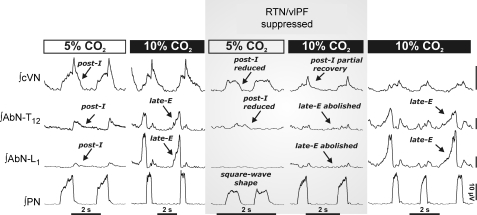Figure 6. The retrotrapezoid/ventrolateral parafacial regions (RTN/vlPF) are relevant for the 3-phase respiratory rhythm and generation of late-E abdominal (AbN) activity.
Hypercapnia (10% CO2) induces late-E bursts in the AbN (T12–L1) (left). Bilateral microinjections (n= 11) of isoguvacine hydrochloride (GABAA receptor agonist) to suppress the RTN/vlPF region disrupted the 3-phase respiratory rhythm during eucapnia (5% CO2). Post-inspiratory motor output on both AbN and central vagus (cVN) nerves was reduced and phrenic nerve pattern (PN) was transformed to a ‘square-wave’ shape. RTN/vlPF suppression also abolished late-E AbN bursts during hypercapnia (10% CO2). Late-E activity recovered after isoguvacine was washed out (∼1 h) (right panel). All traces show integrated nerve activities.

